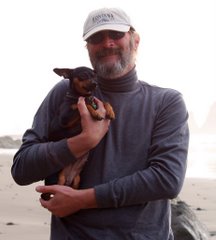Cannon to right of them,
Cannon to left of them,
Cannon behind them
 Volley'd and thunder'd;
Volley'd and thunder'd;
Storm'd at with shot and shell,
While horse and hero fell,
They that had fought so well
Came thro' the jaws of Death
Back from the mouth of Hell,
All that was left of them,
 Left of six hundred.
Left of six hundred.
--From The Charge of the Light Brigade
Alfred Lord Tennyson

MacDonald Pass--where US 12 crosses the Continental Divide
Powell/Lewis & Clark Counties, Montana
Taken 9/8/07
It’s fitting that I should leave Missoula via I-90 and the Hellgate Canyon. As I was sitting in the hot tub this morning, I saw Orion shining bright and clear to the east. As I’ve always had a special affinity for the hunter, I took his appearance as a sign that it was time to continue eastward. By the time I got my morning work done, the car loaded, the kids and Gary kissed goodbye, it was almost noon. By the time I filled the tank at Costco ($2.85/gallon), it was noon and I merged into the flow of east-bound traffic on I-90, saying good-bye to the burnt landscape and smoky air.
The canyon east of Missoula was a battlefield where the Salish and the Blackfeet met and fought over hunting and fishing rights. When the first French trappers reached the area, they were so stunned by the sight of human bones covering the ground that they cried out, “Mais c’est la porte de l’enfer.” Missoula’s first name was Hellgate, and the downtown high school is today Hellgate High. (Many of us felt that our own high school was one of those portals as well.)
By leaving town, I missed the annual Hemp Fest held in Caras Park downtown. Driving east, I drove right by the location of the annual Testicle Festival, and didn’t stop to buy any tacky souvenirs, such as the t-shirts that read “Testicle Festival 2007: I had a BALL!” Besides, I’ve bought a ton of those shirts in the past. Never attended the three day drunken brawl though. Just not that fond of Rocky Mountain Oysters.
I crossed the Granite County line (Number 46 on Montana license plates) and drove right by Drummond, where the “World Famous Bullshippers” live and work. Entering Powell County (Number 28), I passed Camp Mak-A-Dream—a campground facility for children with terminal cancer. After driving seventy-five miles on the Interstate, I took the exit at Garrison Junction, where the sign reads “State Capitol Next Right.” Note it does not say “Next Exit.” Do you suppose it has something to do with the Christian Coalition holding roughly the same percentage of legislative seats that gave Germany to Hitler?
Climbing up and over MacDonald Pass, I stopped to take a few pictures. Unlike the Fords of my childhood, the Volvo had no problem with the pass and I can state most emphatically that I did NOT stop because of vapor lock. MacDonald Pass crosses the Continental Divide, and I passed from the Columbia River watershed into the Missouri River watershed. The river that I’d been following all the way from Missoula is the Clark Fork of the Columbia—the river that carries the most water out of Montana. Once past Helena, I would following the Missouri itself for a few miles.
MacDonald Pass is also where I crossed from Powell County into Lewis and Clark County (Number 5). Helena, the seat of Lewis and Clark County is also the capitol of the state of Montana. At the turn of the twentieth century, Helena had more millionaires per capita than any other place in the US. The operative phrase, of course, is “per capita,” but if you drive through the residential areas on the western side of town, you’ll be amazed at the size and number of mansions there—mansions built over a hundred years ago.

The Montana State Capitol Building
Click to enlarge and see Thomas Frances Meagher
Taken 9/8/07 in Helena, Montana
While in Helena, I stopped at Costco to retrieve some enlargements I had sent ahead. (Isn’t the internet wonderful?!?) I also bought a few staples for the trip and got out with my dignity pretty much intact. Do I need to say that I’m still wearing that leather kilt? Helena is the first place anyone has looked at me twice.
East of Helena, I crossed first into Jefferson County (Number 51) and then into Broadwater County (Number 43). Townsend is the seat of Broadwater County, and the broad water itself is the Missouri, which I crossed just before entering town. The clouds over the Little Belt Mountains were beginning to look threatening, and there was fresh snow on the ridge line.
I love the drive through the Little Belts as US 12 runs from Townsend to White Sulphur Springs, and I got to really appreciate the drive because the state is rebuilding the highway. Much of the way there was no pavement and a 35 mph limit.
White Sulphur Springs sits in the Smith River Valley, and is seat to Meagher County (Number 47). See how things all line up. Meagher County (and you do know to pronounce it Marr, don’t you? The gh is silent.) is named for the same Thomas Francis Meagher, and the Smith River is named for the same Jedediah Smith who gave his name to Smith River California where this journey began. The most interesting building in town is currently the home of the Meagher County Historical Society, and is known locally as The Castle.

The Castle
Taken 9/8/07 in White Sulphur Springs, Montana
The mountains to the south of town are also called the Castle Mountains, and as I drove through them I thought back to all the trips we took along this route when I was a child. Some of the more fanciful Montana place names are along this road, including the fishing resort town of Checkerboard and the town that was named for a cattle ranch brand, Twodot. The Bair family lived near Martinsdale, just off US 12, and while father Charlie made his money in petroleum products, his spinster daughters became philanthropists and amassed enough of a collection that their ranch is now a museum with an art collection that makes it worth your while to get off the road for a bit. The performing arts center in Billings is The Alberta Bair Theatre, in case you wondered where the money came from. My first dean at the School of Fine Arts tried to get me to go to work cataloging the Bair collection, but warned me that Alberta Bair drank most men under the table. Sounds like a Montana ranch woman to me.
The clouds continued getting darker and I did drive through a bit of heavy rain. Crossing over into Wheatland County (Number 44), I noted how the terrain was broadening and flattening. Nowhere in Montana will you find truly flat land, but the valley here was wider than any I’d seen so far on the trip, even if the Judith Mountains to the north showed fresh snow. I was also passing through Hutterite country, and the prosperous communal farms of this sect of German Anabaptists were lush with corn ready for harvest. They also seemed to have quite a crop of wind turbines on many of the ridge lines. Corn and wind. Sounds like politics, doesn’t it.

Retired Electric Locomotive
Chicago Milwaukee St. Paul and Pacific Railroad
The Milwaukee Road
Taken 9/8/07 in Harlowton, Montana
The railroads brought settlers into Montana, and to entice people to come to this unknown land, towns were named for familiar places in Europe, and counties were set up with Chamber of Commerce names. Towns like Havre, Kremlin, Malta, Belgrade, Amsterdam were all named to make them sound familiar to the immigrants who came west on the railroad. Counties like Wheatland, Golden Valley, Petroleum, Sweet Grass, were all set up in the hope of attracting farmers. The settlers came, farmed the land, and were wiped out by drought and temperature extremes. Montana’s dust bowl preceded by ten years the better known national experience described so well in Steinbeck’s Grapes of Wrath. Eastern and central Montana counties, never heavily populated, today are losing people at an alarming rate.
I picked up the Musselshell River at Checkerboard and have been following it across Wheatland County and into Golden Valley County (Number 53). When I was 8 or 9, my father served as interim pastor to the Methodist churches in Ryegate (Golden Valley County’s seat) and Lavina, a small town at the junction of US 12 and Montana 3 which leads down to Billings. I will never forget the experience of riding an “English” bike for the first time in Lavina. As I approached the highway on a side street, I tried to break, the pedals just spun backward. I couldn’t stop, never having experienced hand breaks before. I don’t remember what happened, but I think I fell off the bike rather than ride it into traffic. In any event, I’m still here some 50 years later.

Central Montana Landscape
Taken 9/8/07 in Golden Valley County, Montana
Roundup, the seat of Musselshell County (Number 23), got its name as it was the northern terminus of the Chisholm Trail—or at least of one of those cattle driving trails. Winter ‘em in Texas, but bring ‘em north to Montana for the summer. Seems like an awful lot of work for some steaks and roasts. For Montana’s statehood centennial, a group of entrepreneurs put together a mini-drive, and herded cattle fifty miles from Billings to Roundup. It was a great publicity stunt, and one enterprising town not on the drive, Reedpoint, decided to capitalize on the event by running a sheep drive. The Reedpoint Sheep Drive was so successful as a money maker, that the town continued holding the event for several years. The first year so many people showed up in this tiny town, that the Highway Patrol gave up trying to keep people from parking on the Interstate. For one day, Reedpoint was one of the largest cities in Montana. The next day it was back down to a few hundred folk.
I didn’t see much of Roundup as I was looking carefully for Cowbelle Campground. That’s where I have my tent set up and my computer working. Lo and behold, tonight I even got an internet connection using my Verizon Wireless Air Card. I have no cell phone service here, but three bars on the Air Card. If I still have the connection in the morning, I’ll add my pictures and get this posted.
It’s 10:20 p.m., I’ve driven 329 miles, and I’m ready for bed.
 Volley'd and thunder'd;
Volley'd and thunder'd; Left of six hundred.
Left of six hundred.








No comments:
Post a Comment